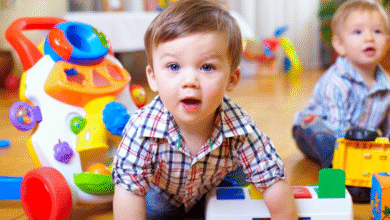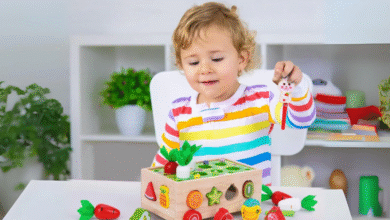The Role of Toys in Developing Fine Motor Skills in Children

Fine motor skills are the tiny movements we make with our hands and fingers, crucial for everyday tasks like writing, buttoning clothes, or even using utensils. The role of toys in developing fine motor skills in children is more significant than many realize. Toys aren’t just for fun—they are vital tools that help children build essential abilities that support their independence and cognitive growth. In this article, we’ll explore how different toys contribute to developing these skills, the science behind it, and practical tips for parents and educators to choose the right toys.
Understanding Fine Motor Skills in Early Childhood
What Are Fine Motor Skills?
Fine motor skills refer to the small, precise movements made by the hands and fingers. These include grasping objects, pinching, drawing, and manipulating small items. Unlike gross motor skills, which involve larger movements like crawling or jumping, fine motor skills require coordination, dexterity, and control.
See also: Top Educational Toys to Boost Your Child’s Brain Development
Importance of Fine Motor Skills for Child Development
These skills form the foundation for many academic and life activities. From tying shoelaces to typing on a keyboard, fine motor proficiency impacts a child’s ability to perform self-care tasks, communicate effectively through writing, and engage in creative play. Developing these skills early supports confidence and independence in daily life.
How Toys Influence Fine Motor Skill Development
The Science Behind Play and Motor Skill Acquisition
Play is a natural way children explore the world and learn new skills. When children interact with toys, their brain receives feedback that refines their motor planning and execution. Repetitive motions, such as stacking blocks or threading beads, help build muscle memory and coordination.
Role of Sensory and Manipulative Toys
Toys that engage the senses and require manipulation, like textured blocks or shape sorters, stimulate both the sensory system and fine motor control. This dual stimulation enhances brain pathways responsible for motor skills and sensory integration.
Types of Toys That Promote Fine Motor Skills
Building and Construction Toys
Blocks, LEGO sets, and magnetic tiles encourage children to use their fingers and hands to build structures. These toys require precise hand movements, improving dexterity and spatial awareness.
Puzzles and Shape Sorters
Manipulating puzzle pieces or fitting shapes into matching holes helps develop problem-solving skills while refining grasp and release motions critical for fine motor control.
Art and Craft Supplies
Using crayons, scissors, glue, and paintbrushes offers diverse hand movements. Crafting activities encourage creativity while strengthening finger and wrist muscles.
Threading and Beading Toys
Stringing beads or threading laces through holes demands patience and precise finger coordination, crucial for hand-eye coordination development.
Interactive Electronic Toys
Some electronic toys have buttons and touchscreens designed for toddlers to improve finger tapping and swiping skills, although these should be balanced with traditional hands-on toys.
Benefits of Using Toys to Develop Fine Motor Skills
Enhances Hand-Eye Coordination
Playing with toys that require precise movements teaches children to coordinate what they see with how their hands move, which is vital for tasks like writing.
Boosts Concentration and Patience
Completing complex toys or puzzles requires focus and perseverance, helping children develop important cognitive and emotional skills alongside motor skills.
Encourages Creativity and Problem-Solving
Many fine motor skill toys also stimulate imagination and critical thinking, enriching overall development.
Age-Appropriate Toy Selection for Fine Motor Development
Toys for Infants (0-12 months)
Soft toys, rattles, and grasping rings help infants practice basic hand movements and sensory exploration safely.
Toys for Toddlers (1-3 years)
Stacking cups, chunky puzzles, and simple shape sorters support toddlers’ growing dexterity and problem-solving.
Toys for Preschoolers (3-5 years)
More complex puzzles, craft kits, and building blocks challenge preschoolers to refine their fine motor control and creativity.
Tips for Parents and Educators on Choosing Toys
Safety Considerations
Always choose toys that are age-appropriate and free of small parts for younger children to prevent choking hazards.
Encouraging Independent Play
Allowing children to explore toys on their own encourages experimentation and skill development at their own pace.
Balancing Screen Time with Hands-On Activities
While digital toys can be engaging, hands-on play with physical toys remains essential for fine motor growth.
Common Challenges in Fine Motor Skill Development
Identifying Delays and When to Seek Help
Some children may experience delays or difficulties with fine motor tasks. Early identification and intervention can prevent long-term challenges.
How Toys Can Assist in Therapy and Skill Improvement
Occupational therapists often use specific toys and activities to support children struggling with motor skills, making toys a vital part of therapy.
Expert Recommendations and Research Findings
Insights from Child Development Specialists
Experts emphasize the importance of diverse play experiences and advocate for the use of age-appropriate toys to support motor milestones.
Recent Studies on Play and Motor Skills
Research confirms that play involving manipulative toys significantly improves fine motor skills, attention span, and cognitive abilities in young children.
Frequently Asked Questions (FAQs)
Q1: At what age should I start giving my child toys to develop fine motor skills?
A1: Starting from infancy, simple grasp toys are beneficial. As the child grows, more complex toys can be introduced.
Q2: Can electronic toys help develop fine motor skills?
A2: Yes, but they should be balanced with hands-on play that involves physical manipulation for best results.
Q3: What are signs of fine motor skill delays?
A3: Difficulty holding objects, poor hand-eye coordination, or trouble performing basic tasks like buttoning clothes can indicate delays.
Q4: How long should children play daily to improve fine motor skills?
A4: Short, frequent play sessions of 15-30 minutes several times a day are effective and maintain interest.
Q5: Are there specific brands or types of toys recommended?
A5: Focus on toys that are developmentally appropriate, safe, and encourage active manipulation rather than passive play.
Q6: Can fine motor skills be improved later if delayed in early years?
A6: Yes, with consistent practice, therapy, and proper toys, children can improve motor skills at various stages.
Conclusion: Maximizing the Role of Toys in Fine Motor Growth
Toys are more than entertainment—they are powerful tools for developing fine motor skills in children. Selecting the right toys at the right developmental stage can significantly enhance a child’s dexterity, coordination, and confidence. Parents and educators play a vital role by providing safe, engaging toys that encourage hands-on learning. By understanding the connection between play and motor development, we can better support children’s growth and prepare them for everyday success.


